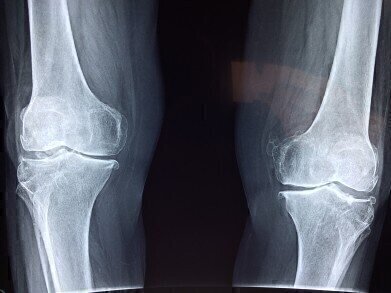Water/Wastewater
How Bones Inspired a New Way to Harness Renewable Energy
Jan 16 2020
With renewables set to play a key role in achieving EU greenhouse gas emission targets in the coming years, scientists are constantly on the lookout for ways of generating energy that isn’t as intermittent as solar or wind. Turning to our seas and oceans is one way of doing so, with tidal, hydroelectric and osmotic energy generally far more reliable sources of power than other methods.
In particular, osmosis technology has grown in popularity over recent years. The technique relies on harnessing the differences in pressure and salinity between freshwater from streams and lakes and saltwater found in seas and oceans. Although very dependable, the components used in the process have until now been too fragile to resist the movement and force of the waves and currents to which they are exposed for any significant period of time.
Finding the right membrane
While osmosis represents a promising avenue of harvesting a reliable form of renewable energy, the different types of membranes used up until now have proved inadequate for the task. Nanomaterials made from clay, graphene oxide, molybdenum disulphide and MXenes are too fragile and are prone to collapse or disintegrate when exposed to choppy waters.
Scientists had pursued boron nitride as a possible alternative to construct the nanosheet membranes, since the substance does not react with other elements easily and can withstand fluctuations in temperature. However, boron nitride is still not robust enough to endure pressure underwater for any concerted period of time either, with microscopic cracks soon appearing in its surface.
Taking inspiration from Mother Nature
Keen to solve this conundrum, a team of scientists from Australia and the United States looked to the organic tissues of living creatures for inspiration. Specifically, they wished to marry the porousness of soft matter such as cartilage with the sturdiness of bone. Using aramid nanofibers, they were able to combine the advantages of each substance while dispensing with its drawbacks, creating a flexible, fibrous membrane that can withstand pressure and temperature changes.
“Our bio-inspired nanocomposite membranes have certain advantages such as high robustness and being easier to fabricate and offering greater multifunctionality than the membranes made of a single material,” explained Weiwei Lei, lead author on the study. “Our new composite membrane has an adjustable thickness and high stability at temperatures ranging from 0 to 95 degrees Celsius and at a pH of 2.8 to 10.8.”
Positive results
The new membrane is constructed via a layer-by-layer basis and uses inexpensive components in its construction, making it easily scalable and cost-effective to implement. Best of all, the membrane is not only more effective at attract sodium cations and repelling chloride anions than alternative substances, but shows remarkable results even after 200 hours and 20 cycles of use.
It’s innovative technologies which allow us to sneak a glimpse into the future of water-based renewable energy generation methods. While there is still a long way to go before the team’s results will translate into a commercially-available and industrially-viable product, the initial signs are hugely encouraging that they may have revealed an effective way to harvest osmotic energy.
Digital Edition
IET 34.2 March 2024
April 2024
Gas Detection - Biogas batch fermentation system for laboratory use with automatic gas analysis in real time Water/Wastewater - Upcycling sensors for sustainable nature management - Prist...
View all digital editions
Events
Apr 22 2024 Hannover, Germany
Apr 22 2024 Marrakech, Morroco
Apr 23 2024 Kuala Lumpur, Malaysia
Apr 23 2024 Kintex, South Korea
Apr 23 2024 Edmonton, AB, Canada


















